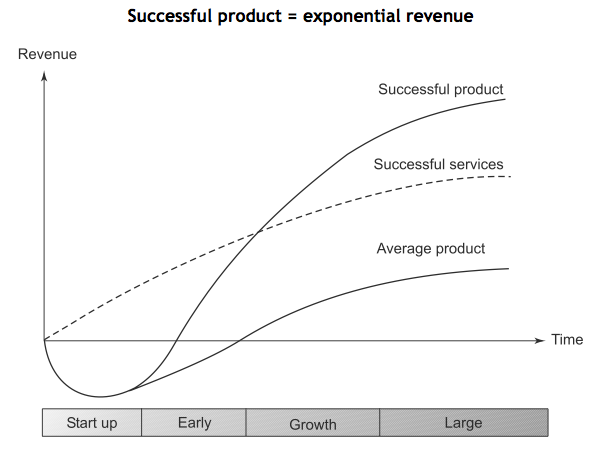What is the difference between software services and products? Why is it important for India to be developing products?
First Invest, and Then Reap
The business cycle in a services company starts with sales, and ends with project or product delivery. On the other hand, a product company must first invest in building the solution. Then begins a long and complex business cycle to sell, support and continuously evolve the product. This reversal of sales and engineering sequence has a profound impact on how product organizations get built.
Services industry provides manpower to build software apps and products, which belong to the customer. Typically, IT departments of retail, manufacturing, financial, insurance and other businesses require new applications, or enhancements to existing ones, for in-house use. They turn to Indian companies for design and implementation. Needing long-term support, global product companies establish extension engineering teams at Indian subsidiaries or services companies.
In services, clients own the Intellectual Property (IP). All gains (cost savings, productivity improvements, revenue) and risks are entirely the clients’. The service provider gets paid in proportion to the cost of development, irrespective of whether the pricing model is fixed cost or time and material (T&M).
This means that the services revenue growth is directly linked to number of engineers. The industry’s competitiveness is determined by cost of engineers. But the number of trained software engineers in India, cannot scale indefinitely. Even today, good talent is becoming scarce. Salaries are rising to a point where low-cost economies such as China, Vietnam and Philippines have started to compete. Nevertheless, superior talent, project management expertise, processes, and English language skills continue to provide an edge to India. However, others are catching up, thereby causing a slowdown in the industry’s growth rate.
In comparison, products have the potential to fetch non-linear revenue. A product business creates intellectual property. Once developed, the same solution is sold repeatedly to a large number of buyers.
The graph above shows the famed hockey stick revenue model for a successful product company. A services organization can have positive revenue from day one, and grow very quickly too, but the headcount-centric model will eventually become a drag.
Reprinted from From Entrepreneurs to Leaders by permission of Tata McGraw-Hill Education Private Limited.


